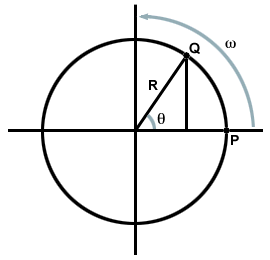Please wait while we process your payment
If you don't see it, please check your spam folder. Sometimes it can end up there.
If you don't see it, please check your spam folder. Sometimes it can end up there.
Please wait while we process your payment

By signing up you agree to our terms and privacy policy.
Don’t have an account? Subscribe now
Create Your Account
Sign up for your FREE 7-day trial
By signing up you agree to our terms and privacy policy.
Already have an account? Log in
Your Email
Choose Your Plan
Individual
Group Discount
Save over 50% with a SparkNotes PLUS Annual Plan!
 payment page
payment page
Purchasing SparkNotes PLUS for a group?
Get Annual Plans at a discount when you buy 2 or more!
Price
$24.99 $18.74 /subscription + tax
Subtotal $37.48 + tax
Save 25% on 2-49 accounts
Save 30% on 50-99 accounts
Want 100 or more? Contact us for a customized plan.
 payment page
payment page
Your Plan
Payment Details
Payment Summary
SparkNotes Plus
You'll be billed after your free trial ends.
7-Day Free Trial
Not Applicable
Renews July 8, 2025 July 1, 2025
Discounts (applied to next billing)
DUE NOW
US $0.00
SNPLUSROCKS20 | 20% Discount
This is not a valid promo code.
Discount Code (one code per order)
SparkNotes PLUS Annual Plan - Group Discount
Qty: 00
SparkNotes Plus subscription is $4.99/month or $24.99/year as selected above. The free trial period is the first 7 days of your subscription. TO CANCEL YOUR SUBSCRIPTION AND AVOID BEING CHARGED, YOU MUST CANCEL BEFORE THE END OF THE FREE TRIAL PERIOD. You may cancel your subscription on your Subscription and Billing page or contact Customer Support at custserv@bn.com. Your subscription will continue automatically once the free trial period is over. Free trial is available to new customers only.
Choose Your Plan
This site is protected by reCAPTCHA and the Google Privacy Policy and Terms of Service apply.
For the next 7 days, you'll have access to awesome PLUS stuff like AP English test prep, No Fear Shakespeare translations and audio, a note-taking tool, personalized dashboard, & much more!
You’ve successfully purchased a group discount. Your group members can use the joining link below to redeem their group membership. You'll also receive an email with the link.
Members will be prompted to log in or create an account to redeem their group membership.
Thanks for creating a SparkNotes account! Continue to start your free trial.
We're sorry, we could not create your account. SparkNotes PLUS is not available in your country. See what countries we’re in.
There was an error creating your account. Please check your payment details and try again.
Please wait while we process your payment

Your PLUS subscription has expired
Please wait while we process your payment
Please wait while we process your payment

Applications of Simple Harmonic Motion
The torsional oscillator and the pendulum are two easy examples of simple harmonic motion. This type of motion, described by the same equations we have derived, comes up in molecular theory, electricity and magnetism, and even astronomy. The same method we applied in this section can be applied to any situation in which harmonic motion is involved.
Through our study of simple harmonic oscillations we have used sine and cosine functions, and talked about angular frequency. It seems natural that there should be some connection between simple harmonic motion and uniform circular motion. In fact, there is an astonishingly simple connection that can be easily seen.
Consider a particle traveling in a circle of radius R centered about the origin,
shown below:

| x = xmcos(σt) |
Simple harmonic motion can be seen as the projection of a particle in uniform circular motion onto the diameter of the circle.
This is an astonishing statement. We can see this relation through the following example. Place a mass on a spring such that its equilibrium point is at the point x = 0. Displace the mass until it is at the point (R,0). At the same time that you release the mass, set a particle in uniform circular motion from the point (R,0). If the two systems have the same value for σ, then the x coordinate of the position of the mass on the spring and the particle will be exactly the same. This relation is a powerful application of the concepts of simple harmonic motion, and serves to increase our understanding about oscillations.
Please wait while we process your payment

